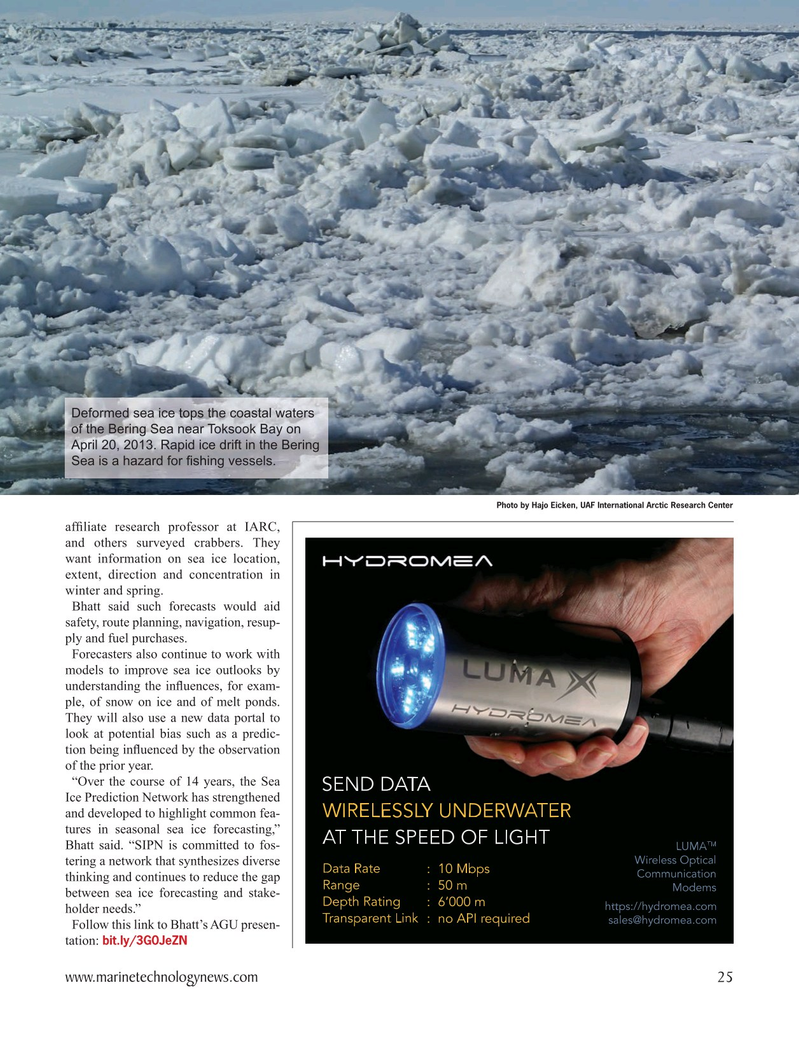
Page 25: of Marine Technology Magazine (January 2022)
Read this page in Pdf, Flash or Html5 edition of January 2022 Marine Technology Magazine
Deformed sea ice tops the coastal waters of the Bering Sea near Toksook Bay on
April 20, 2013. Rapid ice drift in the Bering
Sea is a hazard for ? shing vessels.
Photo by Hajo Eicken, UAF International Arctic Research Center af? liate research professor at IARC, and others surveyed crabbers. They want information on sea ice location, extent, direction and concentration in winter and spring.
Bhatt said such forecasts would aid safety, route planning, navigation, resup- ply and fuel purchases.
Forecasters also continue to work with models to improve sea ice outlooks by understanding the in? uences, for exam- ple, of snow on ice and of melt ponds.
They will also use a new data portal to look at potential bias such as a predic- tion being in? uenced by the observation of the prior year.
“Over the course of 14 years, the Sea
Ice Prediction Network has strengthened and developed to highlight common fea- tures in seasonal sea ice forecasting,”
Bhatt said. “SIPN is committed to fos- tering a network that synthesizes diverse thinking and continues to reduce the gap between sea ice forecasting and stake- holder needs.”
Follow this link to Bhatt’s AGU presen- bit.ly/3G0JeZN tation: www.marinetechnologynews.com 25
MTR #1 (18-33).indd 25 1/25/2022 9:58:18 AM

 24
24

 26
26
